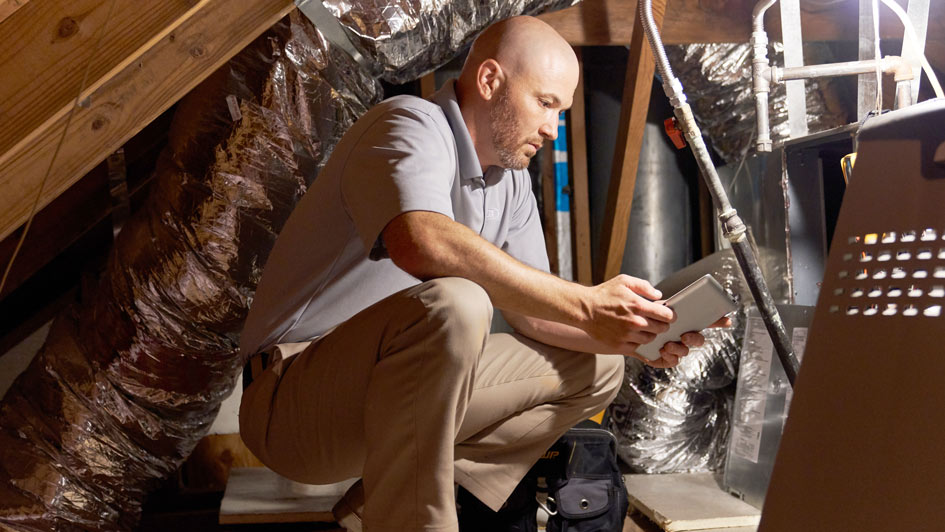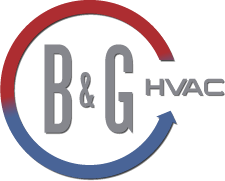
Did you know that more than one-half of your home’s energy costs are needed for your heating and cooling? That’s why it’s essential to secure an energy-efficient HVAC system.
Furnace efficiency standards were last updated to an Annual Fuel Utilization Efficiency (AFUE) rating of 80% in 2015. This rating system measures how effective your furnace is at natural gas into heat. An AFUE rating of 80% means your furnace will waste about 20% of the fuel it uses while creating heat.
In 2022, President Biden revealed new energy-efficiency standards for residential gas furnaces that would greatly reduce emissions, save homeowners money and stimulate sustainability.
These revised standards are projected to:
- Save Americans $1.9 billion annually.
- Lower carbon emissions by 373 million metric tons and methane emissions by 5.1 million tons over the next 25 - 30 years, the equivalent of what 61 million homes emit each year.
Starting in 2029, the updated rule would mandate all new gas furnaces to feature AFUE ratings of 95%. This means furnaces would convert nearly 100% of the gas into usable heat.
So what does all of this mean for your existing furnace in 2023? As of now, very little, as the proposed rule wouldn’t go into effect until 2029 at the earliest and does not affect furnaces that are already in use.
But if you need furnace replacement in soon, highly energy-efficient furnaces are already available. Learn how these furnaces can save you money on your utility bills.
Guide to Condensing Furnaces
How Condensing Furnaces Work
A condensing furnace is a kind of heating system that uses a secondary heat exchanger to collect wasted heat from the furnace's exhaust gases. This reduces the quantity of energy wasted, increases energy efficiency and lowers CO2 emissions. It also will take less natural gas to generate the same volume of heat compared to other types of furnaces.
How Condensing Furnaces Differ from Non-Condensing Furnaces
The biggest difference between a condensing furnace and a non-condensing furnace is condensing models use a secondary heat exchanger to capture any wasted heat from its exhaust gases, while the latter does not.
Expected Longevity of a Condensing Furnace
The life span of a condensing furnace is dependent on the brand, model and other factors. Usually, a condensing furnace should last between 10-20 years with appropriate maintenance and regular service. If you put off scheduled maintenance, it may struggle to perform as well, ultimately failing earlier than anticipated.
Why Condensing Furnaces Are More Expensive
For the most part, condensing furnaces type of system is much more efficient than traditional furnaces, as it only uses the minimum amount of energy required to heat your home, saving you money in the long run.
Many variable-speed furnaces are condensing furnaces, although some are available in non-condensing models with lower AFUE ratings. If a manufacturer wants a furnace to be classified as a condensing furnace, it must offer an AFUE rating of 90% or higher.
Do Variable-Speed Furnaces Run Nonstop?
A variable-speed furnace doesn’t run all the time. Alternatively, it runs at different speeds depending on the temperature in your Marshalltown home as well as the amount of energy it requires to sustain that temperature.
When sufficient energy is necessary to maintain your desired temperature level, the furnace will shift to a higher speed in order to keep up with demand. This allows for more efficient heating in your home while also providing quieter operation.
Guide to Two-Stage Furnaces
Two-Stage Furnaces: What They Are and How They Work
A two-stage furnace is a type of heating system that utilizes two different stages of operation — high and low. On the low stage, the furnace runs at a reduced capacity as a way to maintain the chosen temperature in your home more efficiently. During the high stage, the furnace will instead run at maximum capacity to satisfy demands for greater heat. With a two-stage furnace, you can maintain improved energy efficiency and stable temperatures all across your home.
While two-stage furnaces are extremely efficient, not all all types are condensing furnaces.
Does a Two-Stage Furnace Operate All the Time?
A two-stage furnace won’t run all the time. In the low stage of operation, the furnace runs at limited capacity in order to maintain a desired temperature more efficiently within your home. When additional energy is needed to maintain the set temperature, the furnace switches to its high stage and runs at full capacity. For this reason, two-stage furnaces are proven to help reduce energy costs without operating constantly.
Contrasting Two-Stage and Variable-Speed Furnaces
Two-stage furnaces have two stages of functionality, low and high. During the low stage, the furnace works at reduced capacity as a way to maintain a desired temperature within your home. When more warmth or cooling is needed, the furnace will change over to its high stage and operate at peak capacity.
Variable-speed furnaces, meanwhile, can operate at a variety of speeds in order to maintain a more precise temperature at home. As such, variable-speed furnaces offer greater savings on your utility bills .
Differences Between One- and Two-Stage Furnaces
One-stage furnaces have a single stage fan speed and operate either at full capacity or not at all. In other words, the furnace is always running in order to maintain a desired comfort level within your home.
Two-stage furnaces, by comparison, have two stages of operation, low and high. During the low stage, the furnace runs at reduced capacity in order to maintain the desired temperature more efficiently. When more warmth or cooling is needed, the furnace will shift to its high stage and operate at peak capacity.
Schedule Your Furnace Installation with B & G HVAC Today
Modern furnace technology can be confusing. That’s why B & G HVAC specialists are here to help with a free, no-pressure estimate for furnace installation. We’ll assess your home, your heating needs and your budget before helping you find the right solution. Get in touch with us at 641-316-3360 to get started today!


